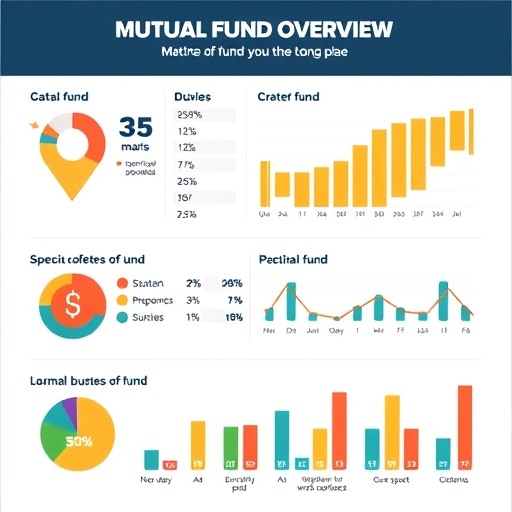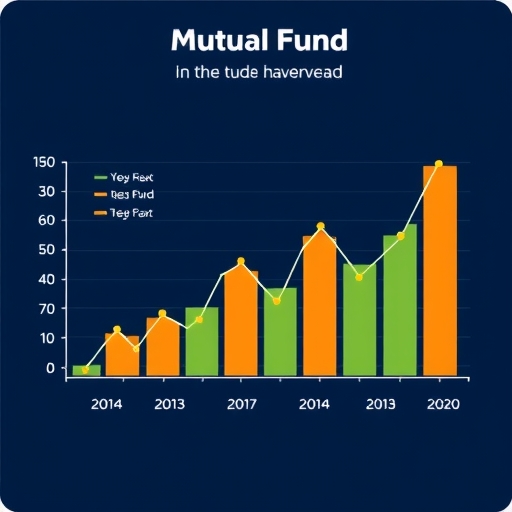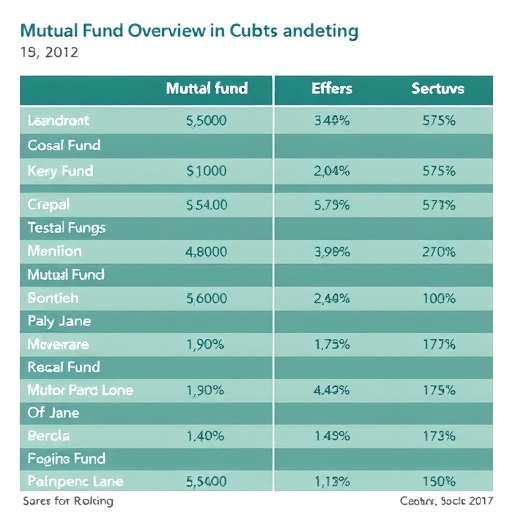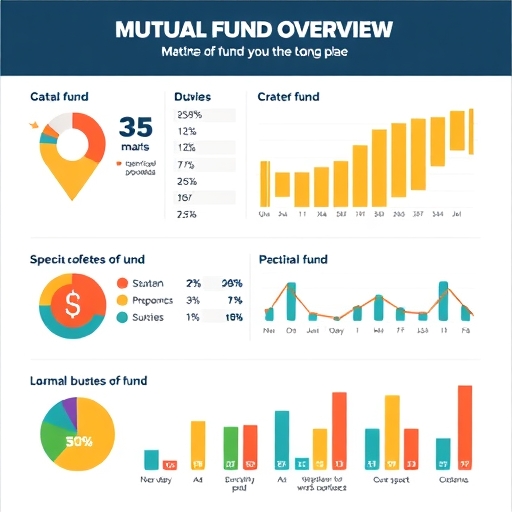Are Your Mutual Funds Truly Safe? Understanding Protection, Performance, and Prudence
Do you often wonder about the safety of your mutual fund investments? It’s a question many investors ponder, especially when faced with market volatility and the omnipresent disclaimer that “mutual fund investments are subject to market risks.” Despite these warnings, millions worldwide entrust their hard-earned capital to mutual funds, drawn by the promise of diversification, professional management, and flexible investment options. In this comprehensive guide, we will delve into the core definition of mutual funds, explore their inherent advantages and various types of risks, outline effective risk management strategies, and highlight the crucial role of regulatory bodies in safeguarding investor interests. Our goal is to equip you with the knowledge to confidently answer the fundamental question: how safe are mutual funds for your financial future?
Many investors frequently ask questions about the security of their investments. Here are some common concerns:
- Is my capital protected from market downturns, or can I lose all my money?
- How do fund managers ensure my money is safe and make sound investment decisions?
- What happens if the mutual fund house itself faces financial difficulties or goes bankrupt?
The Appeal of Mutual Funds: Benefits Beyond Diversification
At its heart, a mutual fund is a financial instrument that pools money from many investors to invest in a diversified portfolio of securities like stocks, bonds, and other financial assets. This collective capital is then managed by professional fund managers who make investment decisions on behalf of all unit holders. Why are these investment vehicles so popular? We believe their appeal stems from several key advantages that make them accessible and attractive to a wide range of investors, from beginners to seasoned professionals.

One of the most significant benefits is diversification. Instead of putting all your investment eggs in one basket, a mutual fund allows you to own small parts of many different companies or debt instruments. This spreads your risk, meaning that if one particular investment performs poorly, its impact on your overall portfolio is minimized. Beyond this crucial aspect, mutual funds offer:
- Professional Management: Experienced fund managers conduct thorough research and make informed decisions, saving you time and effort. They continuously monitor the markets and adjust the portfolio as needed.
- High Liquidity: You can generally buy or sell units of open-ended mutual funds on any business day, providing easy access to your capital when you need it.
- Product Diversity: There’s a vast array of mutual fund types—from equity funds focused on stocks to debt funds investing in bonds, and even hybrid funds that combine both. This allows you to choose funds that align with your specific financial goals and risk tolerance.
- Strong Regulatory Oversight: In countries like India, the industry is closely regulated by bodies such as the Securities and Exchange Board of India (SEBI), which sets stringent rules to protect investor interests and ensure transparency.
- Low Entry Costs: Many mutual funds allow you to start investing with a relatively small amount, making them accessible even for those with limited capital. This low barrier to entry democratizes investment opportunities.
For a better understanding of the range of options available, here is a quick overview of common mutual fund types:
| Type | Primary Investment | Typical Risk Level | Common Investment Goal |
|---|---|---|---|
| Equity Funds | Stocks of companies | High | Long-term capital appreciation |
| Debt Funds | Bonds, government securities, money market instruments | Low to Medium | Income generation, capital preservation |
| Hybrid Funds | Mix of stocks and bonds | Medium | Balanced growth and income |
| Gold/ETF Funds | Gold, commodities, index tracking | Medium | Diversification, inflation hedge |
These advantages make mutual funds a compelling option for wealth creation. However, it’s crucial to understand that “safety” in the context of investing doesn’t mean guaranteed returns or immunity from losses. The value of your investment will always fluctuate with the performance of the underlying assets.
Unmasking Mutual Fund Risks: What Every Investor Must Know
While mutual funds offer numerous benefits, labeling them as “completely safe” would be misleading. True safety in investment often refers to capital preservation and a degree of predictability in returns. However, mutual fund values are inherently linked to the performance of the underlying securities, which means their values can and do fluctuate. Understanding the various risks involved is the first step toward informed and prudent investment.

So, what are these risks that every investor must be aware of?
- Market Risk (Systematic Risk): This is perhaps the most significant risk. It refers to the possibility of losses due to broad market downturns, often triggered by factors like economic recessions, natural disasters, inflation, or political conflicts. For example, during the 2008 Financial Crisis, nearly all asset classes, including mutual funds, experienced significant declines. This type of risk cannot be eliminated through diversification within the stock market alone, as it affects the entire system.
- Liquidity Risk: While mutual funds are generally liquid, some schemes might face liquidity issues if there’s a sudden, large-scale redemption request and the underlying assets are difficult to sell quickly without a significant price drop. Funds with lock-in periods, such as ELSS (Equity Linked Savings Schemes), also present a form of liquidity constraint, as you cannot redeem your investment before a specified period.
- Credit Risk: Primarily relevant for debt funds, this risk arises if the issuer of a bond or other debt security held by the fund defaults on its interest payments or fails to repay the principal amount. The Franklin Templeton Debt Fund Crisis in 2020 served as a stark reminder of how credit risk can impact even seemingly safe debt instruments.
- Concentration Risk: This occurs when a mutual fund, or your overall portfolio, is overly invested in a single sector, industry, or a very small number of securities. If that particular sector or company faces challenges, the impact on your investment can be substantial. This highlights why thorough diversification is so important.
- Interest Rate Risk: Also mainly affecting debt funds, this risk arises from changes in prevailing interest rates. When interest rates rise, the value of existing bonds (and thus debt funds) typically falls, and vice versa. This is because newly issued bonds offer higher interest payments, making older, lower-yielding bonds less attractive.
- Inflation Risk: This is the risk that your investment returns will not keep pace with the rate of inflation. If your money grows at 5% but inflation is 7%, your purchasing power actually diminishes, eroding the real value of your returns over time.
- Currency Risk: If a mutual fund invests in international securities, changes in exchange rates between your domestic currency and the foreign currency can impact your overall returns. A stronger domestic currency can reduce the value of foreign assets when converted back.
- Management Risk: Despite professional management, the decisions made by fund managers can sometimes lead to underperformance. Poor stock selection, emotional decisions, or a deviation from the fund’s stated strategy can negatively affect returns.
- High Annual Expense Ratio: This is a recurring fee charged by the mutual fund to cover its operational costs, including management fees. A higher expense ratio directly reduces your gross returns, so it’s vital to compare this metric across similar funds.
- Mutual Fund Loads: Some funds charge one-time fees, known as “loads.” An exit load, for instance, is a fee you pay when you redeem your units before a certain period. These fees can eat into your profits.
It is also important to address some common misconceptions investors might have about mutual fund risks:
- Mutual funds are like fixed deposits and guarantee returns regardless of market conditions.
- Diversification within a mutual fund portfolio eliminates all risks completely, making it impossible to lose money.
- Past performance is a definite indicator of future results, meaning a fund that did well in the past will always do well.
Understanding these different facets of risk is crucial. It’s not about avoiding them entirely, as all investments carry some level of risk. Instead, it’s about acknowledging them and developing strategies to manage and mitigate their potential impact on your financial goals.
Strategic Investing: Managing and Mitigating Mutual Fund Risks
Now that we’ve explored the various risks associated with mutual funds, the next logical question is: how can you, as an investor, effectively manage and mitigate these risks to enhance the safety of your investments? While no strategy can eliminate all risks, especially market risk, a disciplined approach can significantly improve your chances of achieving your financial goals and protecting your capital. We believe that prudent investment is about controlling what you can control.

Here are some strategic approaches to help you navigate the complexities of mutual fund investing:
- Understand Your Personal Risk Tolerance: Before investing a single rupee, honestly assess your comfort level with risk. Factors like your age, current income, financial obligations, and investment horizon (how long you plan to invest) all play a role. A young professional with stable income and a long-term horizon might tolerate more volatility in equity funds, while someone nearing retirement might prefer the relative stability of debt funds. Aligning your portfolio with your personal risk tolerance is paramount for peace of mind.
- Invest Through Systematic Investment Plans (SIPs): Instead of making a lump-sum investment, consider investing a fixed amount regularly (e.g., monthly) through a Systematic Investment Plan (SIP). This strategy employs “rupee cost averaging,” meaning you buy more units when prices are low and fewer when prices are high. Over time, this averages out your purchase cost, reducing the impact of market fluctuations and mitigating market risk. SIPs instill discipline and are an excellent way to harness the power of compounding.
- Diversify Your Portfolio Across Asset Classes: While mutual funds themselves offer diversification within a specific asset class, true portfolio diversification means spreading your investments across different types of assets, such as equity funds, debt funds, gold, and perhaps real estate. Different asset classes tend to perform differently under various market conditions. For example, when equity markets are volatile, debt instruments might offer stability. This broad diversification helps to offset losses in one area with gains in another, significantly reducing your overall concentration risk. You might also consider diversifying across different sectors within equity funds to avoid overexposure to a single industry.
- Utilize Systematic Transfer Plans (STPs): An STP allows you to transfer a fixed amount from one mutual fund scheme to another at regular intervals. This is often used to gradually shift money from a low-risk fund (like a liquid fund) to a higher-risk fund (like an equity fund) over time. It can be a smart way to enter volatile markets, similar to SIPs, but with existing capital. STPs help in balancing your asset allocation and managing market entry timing, further enhancing your investment safety.
Here’s a brief comparison of two popular investment approaches:
| Feature | Systematic Investment Plan (SIP) | Lump Sum Investment |
|---|---|---|
| Investment Frequency | Regular (e.g., monthly, quarterly) | One-time, single large investment |
| Rupee Cost Averaging | Benefits from market volatility, buying more units when prices are low | No, susceptible to market timing risk |
| Market Timing | Reduces need for market timing, ideal for consistent investing | Requires precise market timing for optimal returns |
| Discipline & Habit | Instills financial discipline and regular savings habits | May not encourage continuous savings |
By implementing these strategies, you are not just investing; you are investing intelligently and with a greater degree of control over your risk exposure. Remember, the goal is not to eliminate risk, but to manage it effectively to achieve your long-term financial goals.
Regulatory Safeguards and Performance Evaluation for Investor Confidence
A significant factor contributing to the perceived safety of mutual funds, particularly in the Indian context, is the robust regulatory framework. The Securities and Exchange Board of India (SEBI) acts as the primary watchdog, diligently working to protect investor interests and ensure transparency within the mutual fund industry. Alongside SEBI, the Association of Mutual Funds in India (AMFI) plays a crucial role in promoting ethical practices and investor awareness. We can confidently say that these bodies provide a crucial layer of protection, fostering greater investor confidence.

How does SEBI protect you, the investor?
- Investor Education: SEBI actively promotes investor awareness through various educational programs and initiatives. They manage the Investor Education and Protection Fund (IEPF), which funds activities aimed at making investors more informed about their rights and the associated risks of different investment products.
- Disclosure-based Guidelines: Transparency is key. SEBI mandates stringent disclosure requirements for mutual funds. This means funds must openly provide detailed information about their investment objectives, strategies, risks, expense ratios, fund managers’ experience, and past performance. This allows you to make informed decisions by understanding exactly where your money is going and under what conditions.
- Redressal of Investor Grievances: If you have a complaint against a mutual fund or an intermediary, SEBI provides channels for grievance redressal. They actively follow up on unresolved complaints, ensuring that your concerns are addressed.
- SCORES (SEBI Complaints Redress System): This is an online platform launched by SEBI for investors to lodge and track their complaints against various entities in the securities market, including mutual funds, 24/7. It ensures a systematic and timely redressal of grievances, reinforcing trustworthiness in the regulatory process.
The regulatory framework provides several key benefits for investors:
- It ensures fair and transparent practices by fund houses, reducing the chances of fraud or mismanagement.
- It provides a clear mechanism for investor grievance redressal, giving investors recourse if issues arise.
- It promotes trust and confidence in the overall financial market, encouraging more individuals to participate in organized investment.
Beyond regulatory oversight, understanding a mutual fund’s performance metrics is vital for evaluating its true worth and risk-adjusted returns. These metrics help you assess whether the returns you are getting justify the risk you are taking. As informed investors, we should look beyond just the raw returns.
- Alpha: This measures the fund manager’s ability to generate returns above a benchmark index. A positive alpha indicates outperformance, while a negative alpha suggests underperformance relative to the benchmark. It’s a key indicator of the manager’s skill.
- Beta: Beta indicates a fund’s sensitivity or volatility relative to its benchmark. A beta of 1 means the fund moves in line with the market; a beta greater than 1 suggests higher volatility (and potentially higher returns or losses), while a beta less than 1 indicates lower volatility.
- R-Squared: This metric tells you how closely a fund’s performance tracks its benchmark index. An R-Squared of 100% means the fund moves perfectly with the benchmark. A low R-Squared suggests the fund’s performance is less correlated with its benchmark, indicating a significant portion of its movement is due to specific stock selection or other factors.
- Standard Deviation: This quantifies the total volatility or risk of a fund’s returns. A higher standard deviation means the fund’s returns have historically been more spread out from their average, indicating higher risk.
- Sharpe Ratio: This is a crucial metric for evaluating risk-adjusted return. It measures the excess return (return above a risk-free return, like that of a U.S. Treasury Bill) per unit of total risk (standard deviation). A higher Sharpe Ratio indicates that the fund is generating more returns for the amount of risk taken, making it a more efficient investment.
A simplified look at key performance metrics for mutual funds:
| Metric | Description | What it indicates |
|---|---|---|
| Alpha | Excess return of a fund relative to its benchmark. | Manager’s skill in generating returns beyond market movements. |
| Beta | Fund’s sensitivity to market movements. | How volatile the fund is compared to the overall market. |
| Sharpe Ratio | Risk-adjusted return, comparing returns to risk taken. | Efficiency of the fund in generating returns for each unit of risk. |
By combining regulatory assurances with a clear understanding of these performance metrics, you can gain a more comprehensive view of a mutual fund’s true safety and potential for long-term growth.
Lessons from History: Building Resilient Mutual Fund Portfolios
History, particularly financial history, offers invaluable lessons for investors. Major economic events, such as the 2008 Financial Crisis and more recent market disruptions like the COVID-19 Pandemic in 2020, serve as powerful reminders of the inherent volatility of markets and the importance of a disciplined investment approach. These periods of stress underscore why understanding mutual fund safety is not just about avoiding immediate losses, but about building a resilient portfolio that can withstand turbulent times.
The 2008 Financial Crisis, for example, exposed the vulnerabilities of certain investment strategies and highlighted the critical importance of fundamental principles. Many thematic funds or highly concentrated portfolios suffered disproportionately during this period, reinforcing the lesson that over-reliance on a single sector or asset class can be perilous. What enduring lessons did we learn, and how can we apply them to enhance the safety of our mutual fund investments today?
- The Imperative of True Diversification: The crisis vividly demonstrated that simply investing in multiple stocks or even multiple mutual funds within the same asset class (like all large-cap equity funds) isn’t enough. True diversification means spreading your investment across different asset classes (equities, debt, gold, real estate), different geographies, and even different types of mutual funds (e.g., actively managed vs. passively managed index funds). This broader approach helps cushion the blow when one particular market or sector faces a severe downturn.
- Realistic Risk Assessment and Rebalancing: The crisis forced many investors to confront their actual risk tolerance versus their perceived one. It underscored the need for a realistic assessment of how much volatility you can truly stomach without panicking and making rash decisions. Regularly reviewing and rebalancing your portfolio to maintain your desired asset allocation is crucial. If one asset class has grown significantly, you might trim it back to your original allocation, thus “booking profits” and reducing potential future risk.
- The Power of a Long-Term Investment Horizon: Perhaps the most profound lesson from history is the importance of a long-term investment horizon. While markets can experience severe short-term declines, history has shown a remarkable ability to recover over extended periods. Investors who panicked and sold their mutual funds at the bottom of the 2008 crisis locked in their losses, missing out on the subsequent recovery. Those who held on, or even continued to invest through SIPs, often saw their portfolios rebound and thrive. For mutual funds, especially equity funds, a long-term perspective (5-10 years or more) significantly mitigates the impact of short-term market volatility and allows the power of compounding to truly work its magic.
By internalizing these lessons—prioritizing broad diversification, understanding your personal risk tolerance, and committing to a long-term investment horizon—you can build a more resilient mutual fund portfolio. This historical perspective reinforces the idea that while mutual funds are not immune to market forces, informed and disciplined investing can make them a relatively secure path to achieving your financial goals.
Conclusion: Mutual Funds — Secure with Prudence
In summary, the question of whether mutual funds are truly safe is nuanced. They are undeniably subject to market risks, and their returns are never guaranteed. However, when approached with diligence and informed decision-making, mutual funds stand as a relatively secure and highly effective investment option for wealth creation. The inherent benefits of diversification, expert professional management by dedicated fund managers, and the rigorous regulatory oversight from bodies like the Securities and Exchange Board of India (SEBI) and the Association of Mutual Funds in India (AMFI) provide a significant layer of security for investors.
True safety in mutual funds hinges on several factors: carefully selecting the right fund that aligns with your financial goals, accurately assessing your personal risk tolerance, and committing to disciplined, long-term investment practices, such as investing through Systematic Investment Plans (SIPs) and maintaining a diversified portfolio across various asset classes. By understanding the different types of risks—be it market risk, liquidity risk, or credit risk—and actively employing strategies to mitigate them, you empower yourself to navigate the market with greater confidence. Therefore, mutual funds are indeed secure, but only to the extent that an investor proceeds with caution, a well-informed strategy, and a commitment to continuous learning.
Disclaimer: This article is for informational and educational purposes only and does not constitute financial advice. Investing in mutual funds involves risks, and you should consult with a qualified financial advisor before making any investment decisions. Past performance is not indicative of future results.
Frequently Asked Questions (FAQ)
Q: What is the primary difference between open-ended and close-ended mutual funds?
A: Open-ended funds allow investors to buy and sell units directly from the fund house at any time, based on the Net Asset Value (NAV). Close-ended funds, however, have a fixed number of units and are traded on stock exchanges like shares, with their price determined by market demand and supply.
Q: Are mutual fund returns taxed?
A: Yes, mutual fund returns are subject to taxation. The tax treatment depends on the type of fund (equity or debt), the holding period (short-term or long-term), and your income tax slab. Capital gains and dividends are taxed differently, and specific rules apply based on current tax laws.
Q: How do I choose the right mutual fund for my investment goals?
A: Choosing the right mutual fund involves several steps: first, define your financial goals and investment horizon; second, assess your personal risk tolerance; third, research various fund types (equity, debt, hybrid) that align with your risk profile; fourth, compare funds based on their expense ratio, past performance (with a disclaimer that past performance is not indicative of future results), fund manager’s experience, and regulatory compliance. Consulting a financial advisor can also be beneficial.



No responses yet